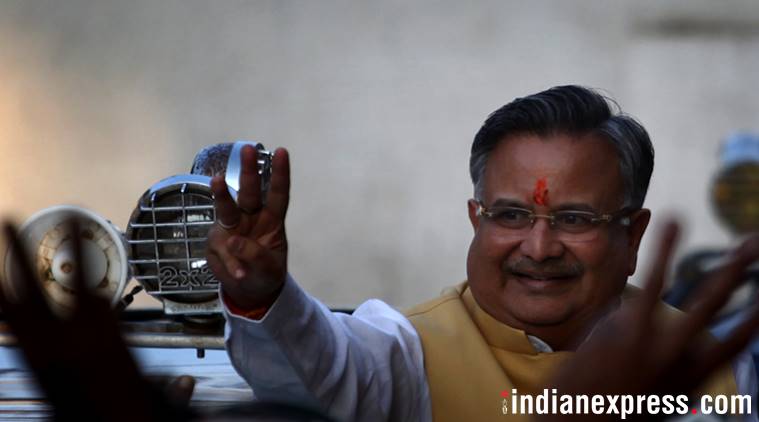The state of Chhattisgarh was among the poorest regions of the country when it was separated from Madhya Pradesh in 2000. The state with 91 assembly seats elected Congress party in December 2000 assembly elections and party veteran Ajit Jogi held the post of Chief Minister for next three years. The fate of the state turned in next election when a ‘gentleman politician’, Dr Raman Singh was chosen by BJP for the position of CM, after it won 50 out of 90 seats on which elections were held.
Raman Singh has completed 15 years as CM of the state and is one of the longest serving CM in the country. Under his leadership BJP was re-elected in 2008 with increased vote share and again re-elected in 2013 by winning 49 out of 90 seats. Raman Singh does not only keeps getting re-elected in the state but also helped BJP win 10 out of 11 Lok Sabha seats in 2004, 2009, and 2014 general elections. He seeks re-election in 2018 assembly election with very strong presence in party as well as popularity in the state.
He governed a state with 32 percent tribals, 12 percent Scheduled castes and 49 percent OBC population for 15 years, despite being an upper caste Rajput. His community constitutes less than 3 percent of total population of the state and the upper caste itself holds less than 10 percent of total vote share. He elevated the politics above the caste manipulations which has been a striking feature of Indian politics. So, how is it that the man defeats anti-incumbency every time when Indian voters are known to be most desperate for a change, in the helm of state affairs. The welfare schemes implemented by the 66 year old year Ayurvedic doctor have made him very popular among poor tribals of the state. Before he took over, the majority population of Chhattisgarh was so poor that it couldn’t even afford a proper meal. He started public distribution scheme (PDS) under which poor families were provided 1 kg of rice for 1 rupee and distributed milch cows to Adivasi families.
To ensure industrial development he encouraged corporate houses to setup plants in the state. The state had an abundant amount of natural resources but these were not exploited for the benefit of the people of the state. In the last one and half decade the state has become a power hub and key for important industries like steel. The development of industries gave the state a much required boost, as tax money was spent on the welfare of poor and tribal population of the state. “When we came to power in 2003, the state was facing several problems, including Naxalism, but now the situation has changed. In 2003, the budget of the state was Rs 7,000 crore which has now expanded to a whopping Rs 78,000 crore. Power generation capacity as well as telecommunication facilities have increased in the state,” said Raman Singh in an interview in 2016. “Chhattisgarh was once termed as a backward state but now it is attracting maximum industrial investment across the country,” he added.
The huge part of state budget goes to welfare schemes like Mukhyamantri Khadyann Sahayta Yojana scheme under which almost 60 lakh families are provided rice, salt and gram at cheaper rates. Chhattisgarh was first state to have a transparent PDS system and ensured food security much before central government brought the act in 2013. He also reformed health and education sector of the state. The government has been able to bring education to the Maoist infested areas of the state. Infant Mortality Rate (IMR) and Maternal Mortality Rate (MMR) of the state improved significantly under Raman Singh’s tutelage. In 2012, the state government launched Mukhyamantri Swasthya Bima Yojana (MSBY) to extend to coverage of Rashtriya Swasthya Bima Yojana (RSBY) to non-BPL families. For a one time payment of 30 rupees, the state government provided annual insurance cover of 30,000 rupees for which premium was paid by state government. From October, 2017 the insurance cover limit was extended to 50,000 rupees as per 2013 assembly election manifesto. This scheme covered 55 lakh families, almost 80 percent of the people of the state. The state government launched second phase of the scheme under Ayushman Bharat scheme which will extend insurance cover up to 5 lakh per annum.
Chhattisgarh was at last place among the states and union territories of the country in National Achievement Survey, 2014, conducted by the National Council of Educational Research and Training (NCERT). However in a short span of 3 years, the state reached 19th place in the same survey conducted in 2017. Expansion of public education in the state has helped the tribals integrate themselves with the mainstream. The uneducated and ignorant people of the state were vulnerable to Maoists leaders who used to fool them to pick up arms for ‘revolution’.
The welfare schemes implemented by Raman Singh made him popular enough to beat anti-incumbency for two terms which is very rare in Indian politics. He may get re-elected by the people of the state for fourth uninterrupted tenure in this assembly election. He has ensured universal food, education, healthcare facilities to people of the state. The relentless service to the people of the state is the only reason he governed a Maoist hotbed for 15 years and is all set for his fourth term.
